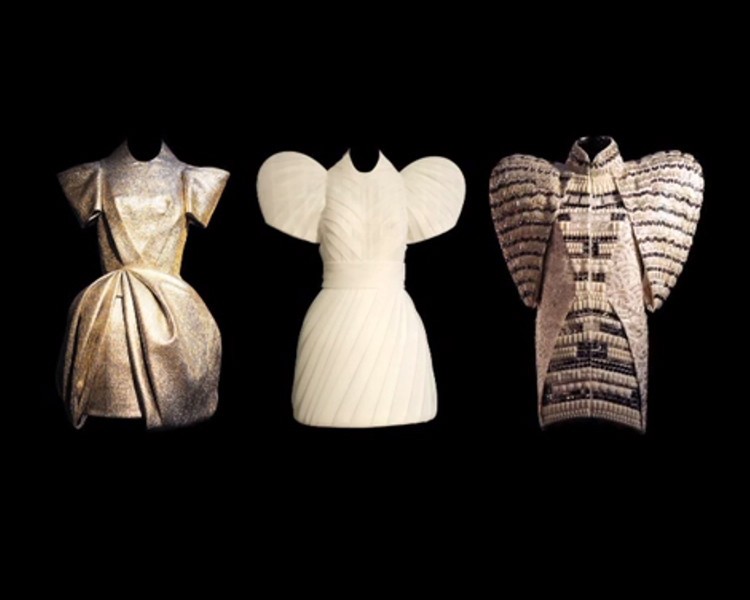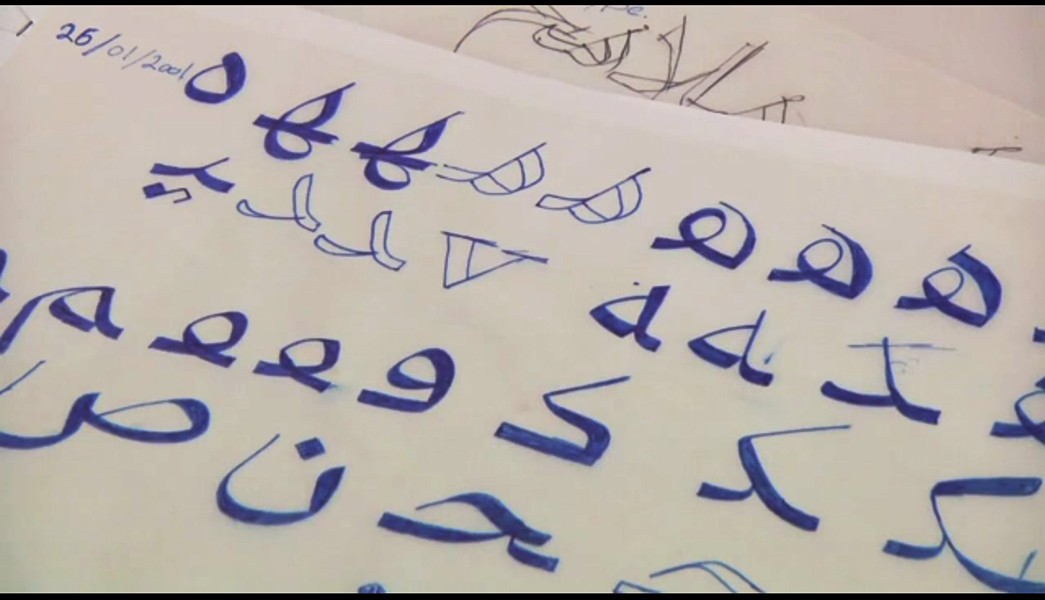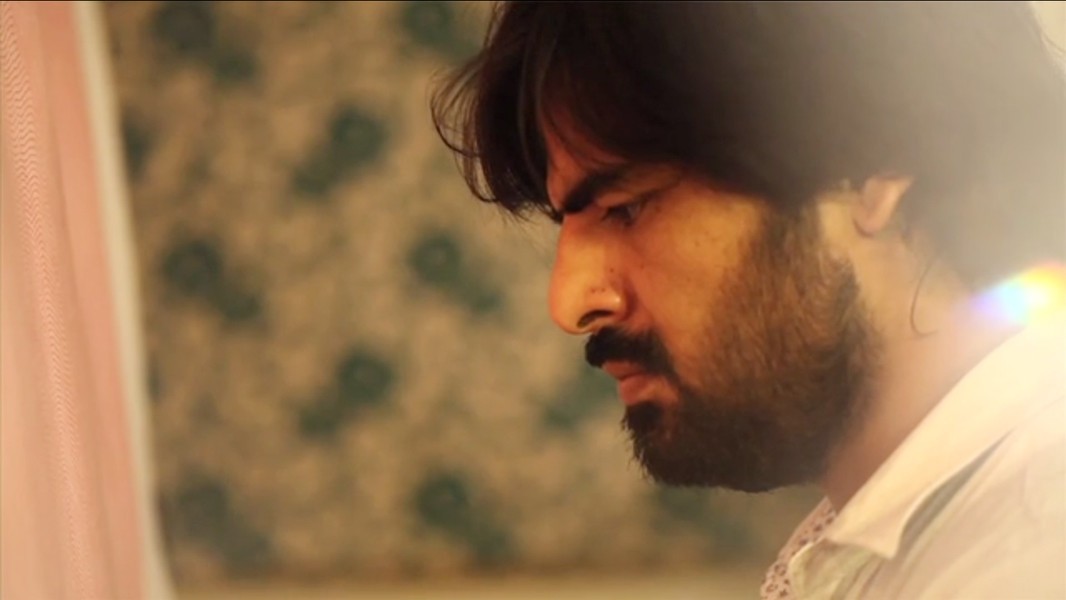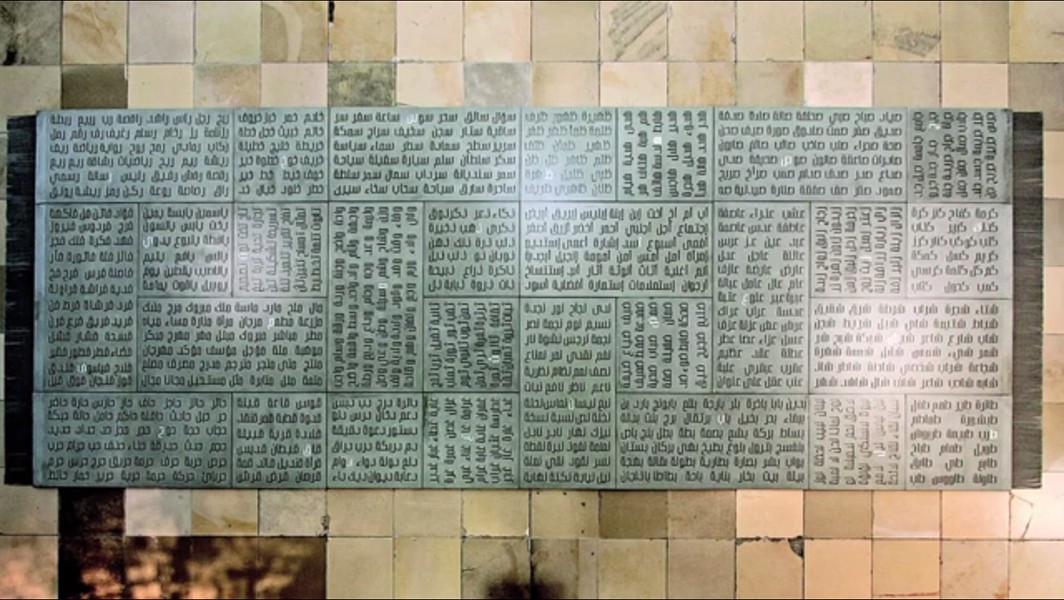The presence of this year’s Jameel Prize can be felt immediately upon entering the exhibition space at the V&A. Now in its 3rd year, this partnership with theV&A and the Abdul Latif Jameel Community Initiatives is a £25000 international art prize for contemporary artists and designers inspired by Islamic traditions of art craft and designs.
The list of countries that entered increased again this year to include for the first time Kosovo, Algeria and Brazil taking Jameel Prize 3 to its biggest and most wide-spread to date. The shortlist exhibition features all ten artists in the running to receive this relatively new but prestigious award.
The works on display this year varies from Arabic typography and calligraphy to fashion, and from video installation to delicate and precise mediative drawings.
Dominating the rear corner of the room is the winning entry from Dice Kayek, a Turkish fashion label established by sisters Ece and Ayse Ege in 1992. Their entry ‘Istanbul Contrast’ is a story of their city told to us via three dresses.
The Caftan: a garment closely inspired by a caftan belonging to Sultan Solomon the Magnificent, the longest reigning sultan of the Ottoman Empire. Ece commented on the royal garment being the source of her inspiration, as it still has a very modern shape and could still be worn with ease in this current era. The Dome: inspired by Istanbul’s architectural skyline, this light weight cotton organdy features folds that echo the ribs of the lead-covered domes of the city’s mosques and palaces. The Hagina Sophia: this mosaic garment was inspired by paintings found on the ceiling of the St. Sophia’s cathedral, loosely depicting St. Gabriel with structured wings adorning the cylindrical body of the coat. The entire garment features French glass beads from the 1920s.
Other notable entries include Arabic typographer Pascal Loghbi who has created the amazing ‘Arabic Font Collage’ that spans to the ceiling of the V&A. Until recently the range of fonts available for printing in Arabic was very small, but is now blooming with growth. The current challenge is to create fonts that stay faithful to the conventions of the Arabic script, while at the same time fulfilling conventional needs. Using his own front creation, 29lt font collection, Loghbi illustrates this process by linking each letter of his type to its historical form.
Trained in the traditional practice of miniature painting, Waqas Khan uses these processes on a large scale to create his magnificent dot drawings consumed with the idea that dots, something so static, can be used to portray emotional states in images with a feeling of movement. His technique is as unique as it is delicate, having designed an apparatus to hold the large pieces of traditionalWasli paper in an upright position. Working with a technical pen, Khan obtains ultimate precision by holding his breath while making the paper, holding the pen with two hands and exhaling only once the ink is on the paper and the pen is lifted.
Putting a very contemporary edge on a traditional Islamic art form, Nada Deb’slarge-scale work ‘Concrete Carpet’ is a fusion of Arabic font design set into what is essentially a Japanese Tatami mat. Each panel of the 28-panel carpet features a different letter of the Arabic alphabet, with one letter on each panel highlighted with a mother of pearl inlay.
The Plastic Gold project devised by social designer Florie Salnot was conceived in 2010. Inspired by the jewellery worn by the women of the Western Sahara and fuelled by empathy for their situation, Salnot has devised a simple tool and technique which she teaches to Sahari women. Promoting their independence both socially and financially, Salnot uses plastic bottles, a resource plentiful in the Sahara Desert found in piles of litter, painted gold. These bottles are then cut into very thin strips, heated using the hot sand and then manipulated by hand into jewellery, which can then be sold.
The shortlisted works have been on display at the V&A since 11th December 2013 until 21st April 2014 and are definitely worth a look.
Jack Buster











